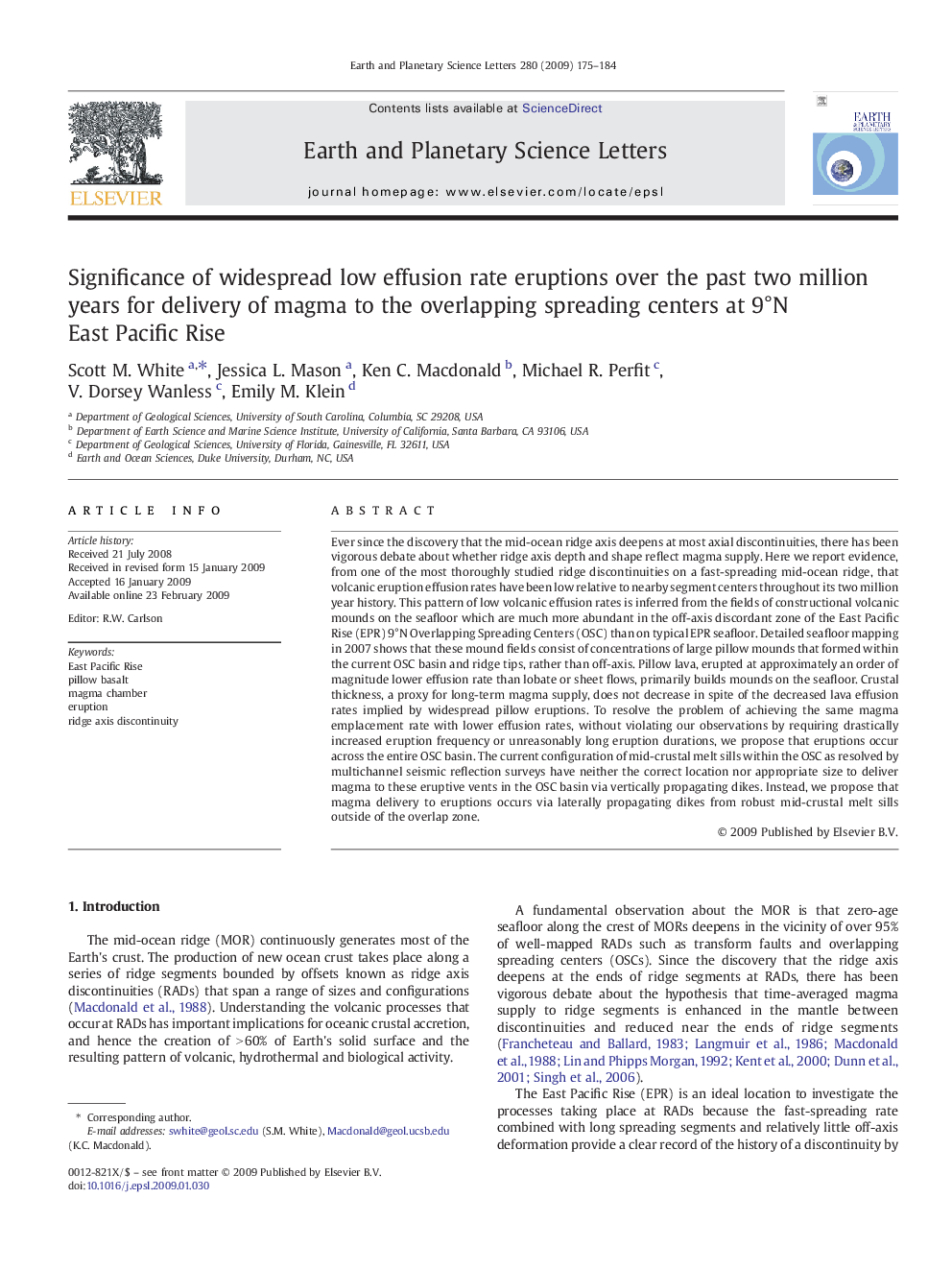| Article ID | Journal | Published Year | Pages | File Type |
|---|---|---|---|---|
| 4678910 | Earth and Planetary Science Letters | 2009 | 10 Pages |
Ever since the discovery that the mid-ocean ridge axis deepens at most axial discontinuities, there has been vigorous debate about whether ridge axis depth and shape reflect magma supply. Here we report evidence, from one of the most thoroughly studied ridge discontinuities on a fast-spreading mid-ocean ridge, that volcanic eruption effusion rates have been low relative to nearby segment centers throughout its two million year history. This pattern of low volcanic effusion rates is inferred from the fields of constructional volcanic mounds on the seafloor which are much more abundant in the off-axis discordant zone of the East Pacific Rise (EPR) 9°N Overlapping Spreading Centers (OSC) than on typical EPR seafloor. Detailed seafloor mapping in 2007 shows that these mound fields consist of concentrations of large pillow mounds that formed within the current OSC basin and ridge tips, rather than off-axis. Pillow lava, erupted at approximately an order of magnitude lower effusion rate than lobate or sheet flows, primarily builds mounds on the seafloor. Crustal thickness, a proxy for long-term magma supply, does not decrease in spite of the decreased lava effusion rates implied by widespread pillow eruptions. To resolve the problem of achieving the same magma emplacement rate with lower effusion rates, without violating our observations by requiring drastically increased eruption frequency or unreasonably long eruption durations, we propose that eruptions occur across the entire OSC basin. The current configuration of mid-crustal melt sills within the OSC as resolved by multichannel seismic reflection surveys have neither the correct location nor appropriate size to deliver magma to these eruptive vents in the OSC basin via vertically propagating dikes. Instead, we propose that magma delivery to eruptions occurs via laterally propagating dikes from robust mid-crustal melt sills outside of the overlap zone.
